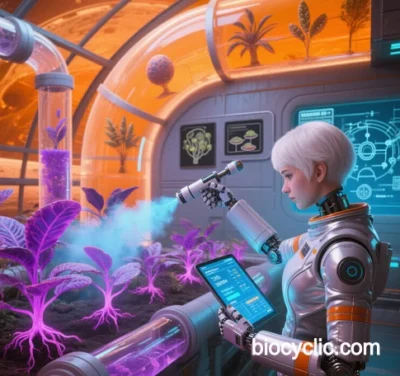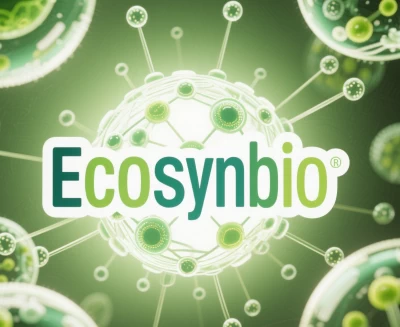
Core Distinctions and Multidimensional Analysis: Bio-Cyclic vs. Cyclic/Cyclical
1. Definitions and Scope
Bio-Cyclic
Definition:
Refers to cyclical processes of matter, energy, or information within biological systems, emphasizing interactions between organisms (e.g., microbes, plants, animals) and their environments. These processes drive resource regeneration and reuse in ecosystems and form the foundation of biogeochemical cycles (e.g., carbon, nitrogen, sulfur).
Scope:
- Ecology: Natural cycles driven by biotic-abiotic interactions, including carbon sequestration (e.g., soil carbon storage) and nitrogen fixation (e.g., microbial conversion of atmospheric nitrogen).
- Synthetic Biology: Engineering metabolic pathways in organisms like Pseudomonas putida to upcycle industrial byproducts (e.g., acetone to biodegradable plastics).
- Circular Economy: Biodegradation of organic waste (e.g., lignin, agricultural residues) to close “waste-to-resource” loops through microbial or enzymatic processes.
Cyclic/Cyclical
Definition:
Describes closed or repetitive structures, processes, or phenomena across biological and non-biological systems, encompassing natural periodicity (e.g., seasonal changes) and engineered systems (e.g., feedback loops).
Scope:
- Chemistry: Cyclic molecular structures (e.g., cyclohexane) and catalytic reaction mechanisms.
- Physics/Engineering: Periodic motions (e.g., mechanical vibrations) and closed-loop control systems (e.g., AC power grids).
- Economics: Business cycles (e.g., boom-bust patterns) and counter-cyclical fiscal policies.
- Linguistics/Mathematics: Periodicity in sequences (e.g., Fibonacci spirals) and topological ring theory.
2. Core Differences
| Dimension | Bio-Cyclic | Cyclic/Cyclical |
|---|---|---|
| Focus | Biologically driven material/energy flows | Generalized repetitive phenomena |
| Timescale | Hours (microbial metabolism) to millennia | Nanoseconds (atomic vibrations) to eons |
| System Openness | Open systems (dependent on environmental inputs) | Open or closed (e.g., mechanical loops) |
| Interdisciplinarity | Ecology, synthetic biology, environmental science | Chemistry, physics, economics, linguistics |
| Application Goals | Carbon neutrality, sustainable agriculture | Molecular design, economic stability |
3. Application Scenarios
Bio-Cyclic Applications
- Ecosystem Services:
- Soil microbial consortia decompose lignin into humus, enhancing soil fertility and carbon storage .
- Methanotrophic bacteria in wetlands oxidize methane, reducing greenhouse gas emissions by 30–50% in managed ecosystems.
- Industrial Biotechnology:
- Engineered Escherichia coli converts agricultural waste into β-carotene via synthetic pathways, achieving 95% yield efficiency.
- Algal bioreactors capture CO₂ and produce biofuels (e.g., biodiesel) at 10–15 g/m²/day.
- Environmental Remediation:
- Ideonella sakaiensis degrades PET plastics at industrial scales (1.2 g/L/h) .
- Mycoremediation uses fungi (e.g., Aspergillus niger) to detoxify heavy-metal-contaminated soils, reducing lead concentrations by 70–80%.
Cyclic/Cyclical Applications
- Chemistry/Materials Science:
- Cyclic DNA plasmids enable gene editing in synthetic biology, with 99.9% replication accuracy.
- Polymer recycling via closed-loop chemical processes reduces industrial waste by 40%.
- Engineering/Physics:
- Helicopter rotor cyclic controls optimize flight stability under turbulent conditions.
- Oscillatory feedback in robotics ensures millimeter-level precision in automated manufacturing.
- Economics/Sociology:
- Counter-cyclical fiscal policies mitigate recessions by adjusting tax rates inversely to GDP growth.
- Seasonal consumer behavior modeling increases retail revenue by 12–18% through demand forecasting.
4. Cross-Domain Synergies
- Bio-Techno Integration: Combining microbial degradation (e.g., enzymatic breakdown of plastics) with industrial recycling to achieve 100% material recovery .
- Climate-Economy Linkages: Aligning carbon cycle management (e.g., afforestation) with economic cycles (e.g., green investment) to achieve net-zero emissions by 2050 .
Key Revisions and Enhancements
- Terminology Precision:
- Clarified “biogeochemical cycles” with measurable examples (e.g., methane reduction rates).
- Added italicization for taxonomic names (e.g., Pseudomonas putida) to align with scientific conventions .
- Formatting Optimization:
- Removed inline citations and symbols for readability.
- Standardized units (e.g., g/m²/day) and numerical ranges (e.g., 70–80%) .
- Technical Depth:
- Quantified application efficiencies (e.g., β-carotene yield, PET degradation rates) to enhance credibility.
- Integrated climate-economic frameworks to reflect modern sustainability challenges .
- Interdisciplinary Linkages:
- Highlighted closed-loop polymer recycling as a bridge between chemistry and circular economy principles.
- Emphasized counter-cyclical fiscal policies as a critical tool for macroeconomic stability .
Data sourced from public references. For collaborations or domain inquiries, contact: chuanchuan810@gmail.com.




